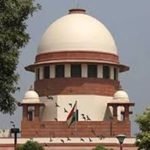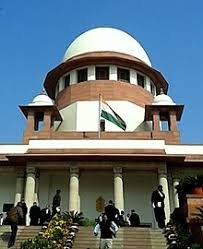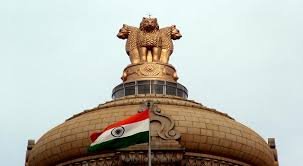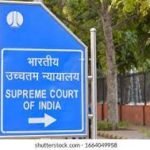Mohammed Asarudeen, the appellant (accused No. 1), is undergoing trial before the Special Court for the National Investigation Agency (NIA) cases in Chennai1. He was initially charged under various sections of the Indian Penal Code (IPC), including murder (Section 302), which were later augmented by several sections of the Unlawful Activities (Prevention) Act, 1967 (UAPA), particularly Sections 15, 16, 18, 18B, 19, and 2012.
Upon the completion of the investigation, the Special Public Prosecutor of the NIA filed an application seeking the protection of witnesses under Section 44 of the UAPA and Section 17 of the National Investigation Agency Act, 2008 (NIA Act), read with Section 173(6) of Cr.P.C.. The application specifically requested permission to withhold copies of Section 161 Cr.P.C. statements of “Protected Witnesses” from the accused, for their safety and security.
The Special Court, on 21st August 2019, allowed the NIA to hide the identity and address of 15 specified witnesses (L.W. 10, L.W. 11, etc.) in the copies to be furnished to the accused. The Special Court also ordered that the original statements be kept in a sealed cover and opened only on the date of examination-in-chief, with copies to be supplied to the accused thereafter. The High Court subsequently interfered with this latter part, setting aside the clause that allowed copies to be supplied after examination-in-chief, effectively meaning the accused would never receive these copies.
Law Involved
The primary legal provisions and principles under scrutiny were:
Section 44 of the Unlawful Activities (Prevention) Act, 1967 (UAPA): This section governs the protection of witnesses.
Sub-section 2 of Section 44 is key, allowing a court, upon application or suo motu, to take measures to keep a witness’s identity and address secret if it is satisfied that the life of such witness is in danger, for reasons to be recorded in writing.
Sub-section 3 lists potential measures, including holding proceedings at a different place, avoiding mention of names/addresses in public records, and issuing directions to prevent disclosure.
Section 17 of the National Investigation Agency Act, 2008 (NIA Act): Sub-section 2 of Section 17 is identical (pari materia) to Section 44(2) of the UAPA.
Section 173(6) of the Code of Criminal Procedure, 1973 (Cr.P.C.) and First Proviso of Section 207 Cr.P.C.: These sections relate to the accused’s normal entitlement to copies of witness statements recorded by the police during investigation, with exceptions where the court exercises specific powers.
Reasoning
The Supreme Court’s reasoning focused on the strict interpretation and mandatory conditions for invoking witness protection under UAPA/NIA Act, especially concerning the accused’s right to a fair defence:
- Mandatory Satisfaction for Danger: The Court emphasised that the first condition precedent for exercising powers under Section 44(2) UAPA is the recording of satisfaction by the Special Court that the life of the concerned witness is in danger. This satisfaction must be based on material available and cannot be a general observation.
- Individualised Assessment: The Court found that the Special Court failed to consider the case of each witness separately regarding possible dangers to their lives and did not record individual satisfaction. An “omnibus application cannot be made… for all witnesses or a number of witnesses”. Specific averments are required for every witness for whom protection is sought.
- Two-Stage Application of Mind: Even after recording satisfaction, the Court must proceed to a second stage: applying its mind to decide what specific measures should be adopted to keep the identity and address secret, and briefly record reasons for these measures. The High Court’s blanket order preventing disclosure even after examination-in-chief was deemed to have ignored this crucial second part of Section 44(2).
- Impact on Accused’s Right to Defence: The Court stressed that Section 44(2) UAPA is an exception to the normal rule that an accused is entitled to witness statements, and its exercise may affect the right of the accused to defend, thus requiring strict compliance.
- Accused’s Right to Hearing: Crucially, the Court clarified that the accused has a right of hearing on the application for witness protection under Section 44(2) UAPA, although their identity is to be kept secret until the Court passes an order2122. This rejected the ASG’s submission that the accused has no right of hearing in such applications.
Holding
The Supreme Court allowed the appeal, setting aside the orders of both the Special Court and the High Court concerning witness protection.
- The Court held that the orders of both the Special Court and the High Court could not be sustained as the fundamental requirement of recording individual satisfaction based on material that the life of a witness is in danger, had not been met.
- The Supreme Court explicitly stated that its order does not prevent the prosecution from making fresh, proper applications under Section 44(2) UAPA and Section 17(2) NIA Act14.
- If such applications are made, the Special Court must decide them in accordance with the law as clarified by this judgment, specifically ensuring individualised assessment for each witness and recording brief reasons for the measures taken.
- Until such applications are disposed of by the Special Court, the identity of the witnesses shall not be disclosed.
- The Court affirmed that the accused has a right to be heard on these applications, while acknowledging the Court’s power to decline disclosure of sensitive material regarding threat perception to the accused.
Mohammed Asarudeen V. Union Of India And Others
Supreme Court: 2025 INSC 746: (DoJ 06-05-2025)








